Your home may not be as healthy as it looks from outside. Just like the human body, it is a multi-layered structure and there are a number of factors that determine its health. According to Jeffrey Toh (www.irbnet.de/daten/iconda/CIB_DC24966.pdf), a building materials and construction research scholar, all buildings start to deteriorate right from the moment they are completed. The most damaging of all the elements that lead to this deterioration is dampness, moisture, and humidity.
Moisture when contacts a cold surface condenses into water droplets. We may not be very conscious about the fact but all types of household activity- cooking, dishwashing, bathing, mopping, or washing clothes and drying them add moisture to the air filling our home. Even breathing, exhalation to be specific, by every living entity of the house adds moisture to the air! Now, the quantity of moisture that air can hold depends on its temperature. Warm air holds more moisture than cold air. During monsoon or winter, when the walls, doors, and windows become cold, the indoor moisture comes up against them and condenses into water droplets.
You may say, “How is it possible that such minuscule amount of moisture added into the air through our everyday activities cause our home to deteriorate?
Well, things wouldn’t have been this complicated had above elements been the only sources of moisture in our house. But there are many other sources which eventually increase the moisture content above its normal level. It is this excess moisture that leads to the dampness of the house.
The other sources of moisture in a house include:
- External/ environmental:
- Humid air from outside condensing into water droplets on coming in contact with cold surfaces in a building
- Rainwater making its way through cracks and crevices on the walls and roofs of buildings
- Groundwater
- Infrastructural:
- Mostly happens due to plumbing failure. For example, leakage in water pipes and drainage pipes, etc.

How does moisture lead to dampness?
As the moisture content inside the building structure rises, it accelerates the conditions for the chemical degradation of the concrete. Soon, the walls become porous and permeable to water, a condition known as damp.
Faulty construction practices and failed waterproofing are the main reasons behind moisture getting inside the fabric of a building and deteriorating it over the years.
While you can visibly check the external leakage and cracks, you cannot have an idea about the hidden construction faults. So, most of the time, your attempts to repair leakage or damp-affected areas either go in vain or leave the problem only half-solved. Therefore, going by the saying, “prevention is better than cure,” it is crucial to identify the main moisture generating places in your home. Once you have identified, you must try to reduce the amount of moisture generated there and check the condensation that happens thereafter.
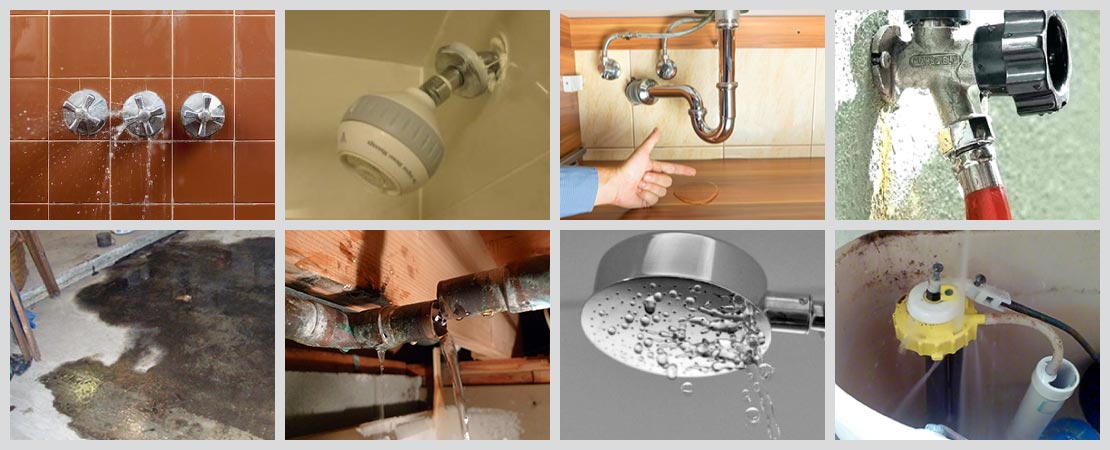
Bathroom: The den of moisture in a house
The Bathroom is one of the most frequently used spaces of the house and undoubtedly, one of the most important ones too. Yet, humidity due to condensation makes it a villain of sort for causing dampness all over the house. Even a quick shower in the bathroom releases moisture into the air.
The problem becomes bigger whenever you take a hot shower because there is a lot of steam rising from the water. The steam mists up mirrors and glass panels or condenses on the walls. This keeps happening every day and that too, multiple times a day! If the place is not ventilated properly, or the wet surfaces are not wiped dry after each shower or wash, and/or there is no exhaust fan in the bathroom, this regular addition of moisture into the air can lead to severe dampness. The situation becomes worse if there is any of the below problems:
- Loose bathroom faucet knob/handle
- Dripping water tap
- Leakage in the bathroom basin pipe
- Poorly sealed joints between water taps and the walls
- Internal leakage in the building water system
- Damage geyser part/leaky pipe
- Leaking hand-held shower hose/toilet jet spray
- Damaged toilet flush valve
- Water seepage
The continuous water loss from these damaged bathroom fittings adds to the moisture content of the house. Soon, signs of damp start showing up on the walls and ceilings in the form of dark, mouldy patches, flaky wall paint, and popped-up tiles. And this does not happen inside the bathroom only; the other parts of the building are affected too in varying intensity.
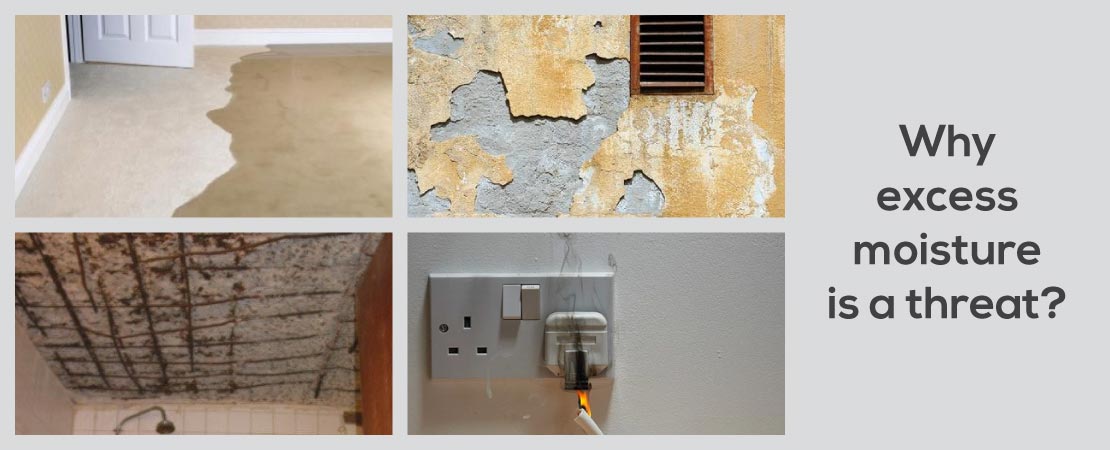
Why excess moisture is a threat?
It is not only the aesthetics of a building that is compromised due to damp. Left unresolved, it exposes us to bigger risks such as:
- Extensive leakage & internal flooding leading to permanent dampness
- Crumbling plaster & detachment from the lath
- Compromised structural integrity of the building
- Electrocution in the concealed electrical wiring system
Health risks of high indoor humidity
Experts opine that the optimal relative humidity level conducive to healthy living is between 35 and 60 percent. Beyond 60 percent, a place becomes excessively humid and a favourite breeding ground of harmful microorganisms like bacteria and viruses. Staying in such a place for long hours can expose you to potential health risks.
Growth of allergens
According to an Environmental Health Perspectives report, excess indoor moisture also leads to higher levels of dust mites, moulds, and fungi. Moulds begin to grow on wet surfaces in relative humidity levels above 75 percent, in as little as 24 hours. Once the moulds germinate, they begin to flourish rapidly producing spores and mycotoxins. Exposure to these mycotoxins causes allergies and respiratory inflammation in the inmates of the house. Ingesting certain mycotoxins can also lead to severe intestinal complications.
Mould spores are also potential allergens and are very difficult to eliminate. They lie dormant in a place for years and as soon as moisture content of that place rises, they start to flourish. Eliminating mould spores is virtually impossible unless their growing conditions are altered drastically.

Release of airborne chemical contaminants
Micro-organisms and allergens aren’t the only things that proliferate under excess humidity; airborne chemicals also increase as the indoor moisture level goes up.
Everyday indoor décor items like wood furniture pieces and carpets release noxious chemicals like formaldehyde, a process known as “off-gassing.” Exposure to even low levels of these chemicals can make you experience red, itchy skin, eye and throat irritation, and respiratory discomfort. The musty smell that fills the air in a damp house is mostly due to these airborne chemical contaminants.
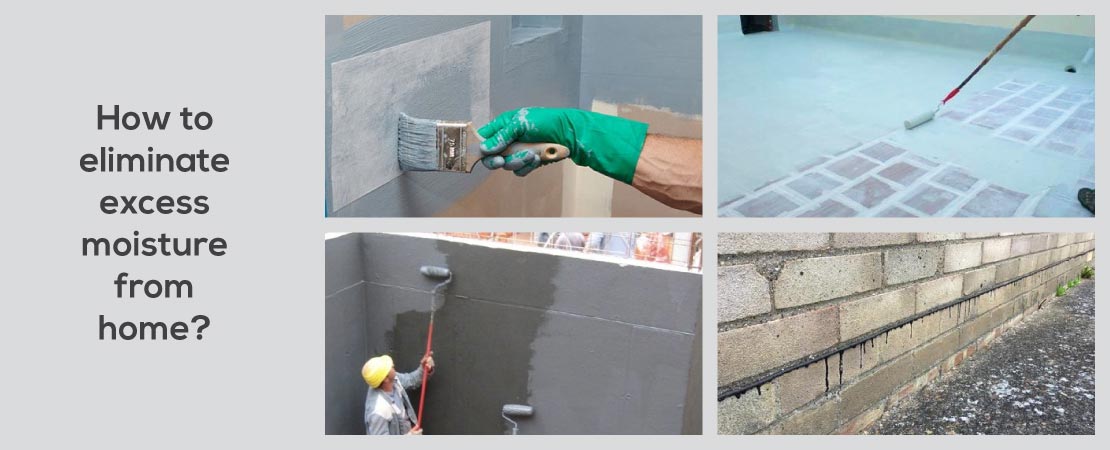
How to eliminate excess moisture from home?
The first step to eliminating excess moisture is to ensure that the source of it is removed for good, and that is best done through waterproofing or damp-proofing.
By waterproofing or damp-proofing you can seal the unwanted water and prevent its further ingress. Then, with the onset of the dry season, the existing moisture content slowly decreases and your home springs back to life.
There are many advantages of waterproofing. Firstly, it enhances the value of your real estate property. And secondly, it sets the cornerstone on which you and your family can build a better quality of life.
However, detecting leakage or seepage that requires waterproofing isn’t an easy task. It is advisable to rely on professionals /home inspectors to do the job for you. They detect building-structure damps using advanced thermal imaging technology devices. Once detected with precision, you can proceed to do curing/waterproofing of only those areas. Otherwise, you may run the risk of making unnecessary expenses that may go up to as high as Rupees 50,000 to Rs. 100,000 approximately for a standard 1000 sq ft area space.
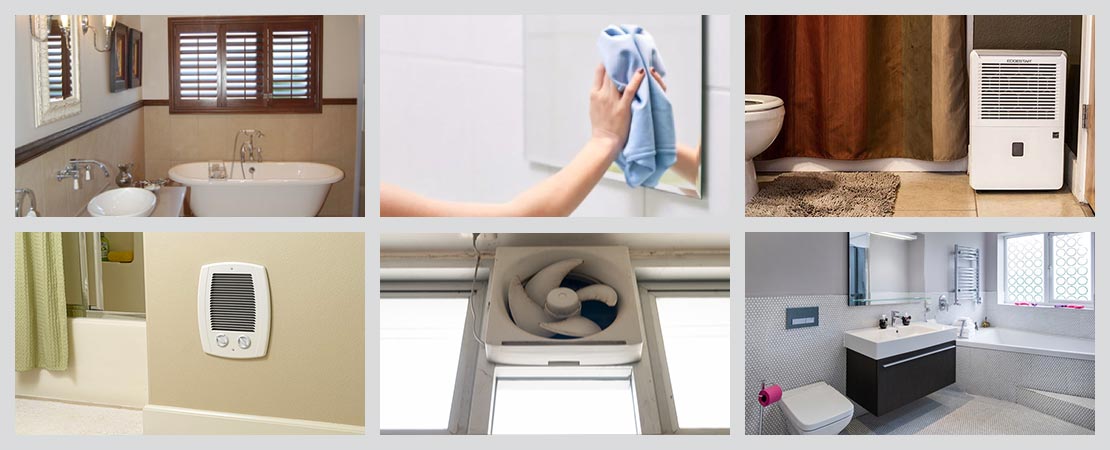
How to check condensation in the bathroom?
To reduce excess humidity in the house it is also crucial to check condensation in the bathroom because as explained earlier, it is the place where the maximum amount of moisture is generated.
The first step to check condensation in the bathroom is to address all plumbing-related issues. A timely repair of damaged bathroom fittings can save you big money on damp-proofing and/or waterproofing.
Besides, you must also ensure the below conditions to keep your bathroom dry and squeaky clean:
- 1. Proper ventilation
- 2. Wiping wet and fogged-up surfaces after each shower
- 3. Using a dehumidifier
- 4. Warming up the walls: Installing a bathroom heater can keep your bathroom warm without heating up the rest of your home wastefully.
- 5. Using exhaust fan
- 6. Incorporating design changes:
- Surfaces that normally come in contact with water should be covered with tiles and/or glass so that water from splashing is prevented from being spread onto the adjacent surfaces.
- The tiled surface on a wall should be high enough to block water from the shower.
- Concrete walls made of porous material should be left un-tiled only in the upper parts and ceilings.
- Provision should be kept for roof ventilators/windows to allow natural daylight in.
- Non-slip tiles should be used to seal the surface below the floor from moisture.
- The tiles must be grouted properly.
- Bathroom walls should be coated with anti-condensation paint.
Moulds in the bathroom are difficult to remove. Don’t let this very important space in your home become a large petri dish for growing moulds. Get down to removing it at the very first sign of accumulation. You can use a baking soda-bleach-water solution or vinegar or hydrogen peroxide to clean the mould-affected areas. Regular use of the solution will give you better results.

Consult a home inspection expert for a long-term solution
Not all moisture related problems are DIY types. Some require complex solutions and hence, expert intervention.
Seek the help of a home inspection service provider like MACJ – A Buyers Choice. They will thoroughly diagnose your home using advanced, non-destructive testing methods and pinpoint the source of areas affected by excess moisture or damp. Based on their detailed report and suggestions, you can plan your next line of action.
Moisture is an important component of home atmosphere but when present in excess, it can severely hamper the quality of life. Don’t let the moisture take over your happiness. Get your home checked professionally the moment you smell it and live a healthy life in a damp-free house for the years to come.
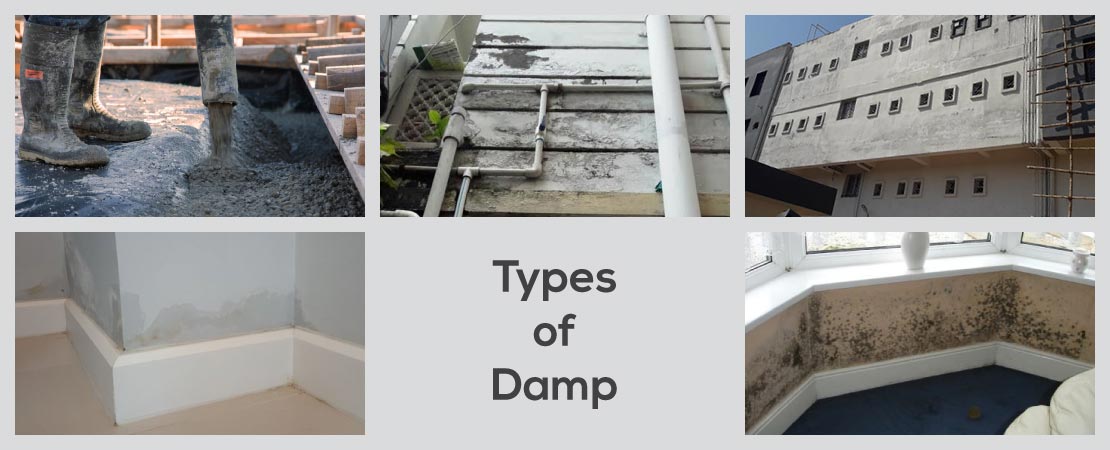
Additional Notes for Information
Types of damp:
- Construction damp: Happens due to poor construction practices. Sometimes, excess water that is added to the concrete mixture during construction bleeds out leaving behind capillary tracts in the wall. Water from the environment then makes its way through these tracts resulting in dampness.
- Shrinkage is another commonly encountered problem in every cement-based construction. After completion, loss of moisture leads to the contraction in the total mass of a building leaving behind gaps. Later on, water from outside penetrates into these gaps resulting in (penetrating) damp.
- Another form of penetration damp results when rain penetrates through the masonry due to poorly installed tiles or cracks on the wall.
- Rising damp: Happens when moisture level rises up from the ground through the masonry to the height of about one metre of the building.
- Condensation dampness: Results when a property is unable to deal with its normal moisture content due to the lack of proper insulation, ventilation or heating, or a combination of all of these things.

